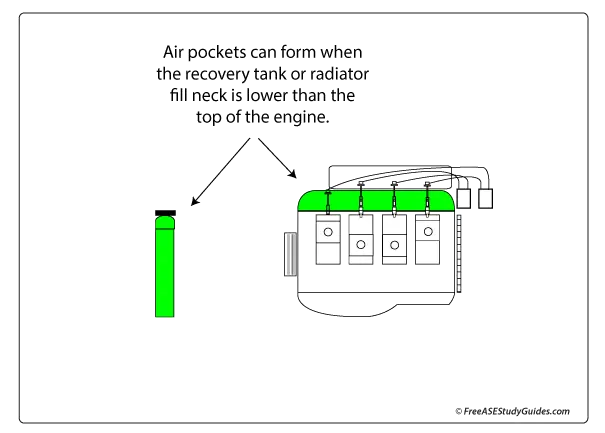Air Pockets in the Cooling System

Today's vehicles have a closed-loop cooling system. Air pockets can form high in the cooling system, typically after replacing a component that requires a drain and refill. During the refill, the engine may overheat because air rises to the top of the system and is more compressible than coolant.

These stubborn pockets form behind the thermostat, water pump, and heater core. Sometimes even after the cooling system appears bled and filled, the engine continues to overheat. Again, it takes monitoring and patience. They can be challenging to remove, and the engine will continue to overheat until the coolant flow is free from air bubbles.
Closed-loop Cooling Systems

Because many designs have the radiator fill neck lower than the top of the engine, it may require a special procedure, a coolant fill funnel, or a special tool that forces coolant into the system. There are two types of closed-loop cooling systems found on today's vehicles, the series, and the parallel system.
A series system flows around the cylinders, then to the back before flowing into the cylinder heads. The coolant flows parallel through passages located beside each cylinder and through the cylinder head in a parallel system.